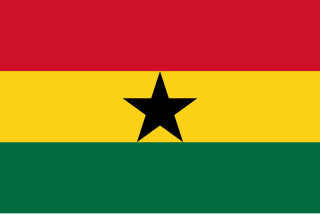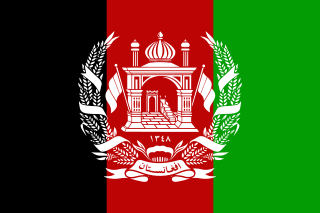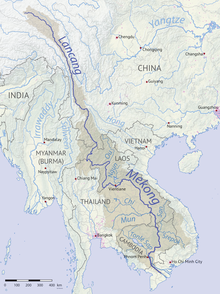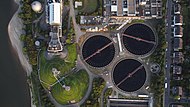
Sanitation refers to public health conditions related to clean drinking water and treatment and disposal of human excreta and sewage. Preventing human contact with feces is part of sanitation, as is hand washing with soap. Sanitation systems aim to protect human health by providing a clean environment that will stop the transmission of disease, especially through the fecal–oral route. For example, diarrhea, a main cause of malnutrition and stunted growth in children, can be reduced through adequate sanitation. There are many other diseases which are easily transmitted in communities that have low levels of sanitation, such as ascariasis, cholera, hepatitis, polio, schistosomiasis, and trachoma, to name just a few.

Drinking water or potable water is water that is safe for ingestion, either when drunk directly in liquid form or consumed indirectly through food preparation. It is often supplied through taps, in which case it is also called tap water. Typically in developed countries, tap water meets drinking water quality standards, even though only a small proportion is actually consumed or used in food preparation. Other typical uses for tap water include washing, toilets, and irrigation. Greywater may also be used for toilets or irrigation. Its use for irrigation however may be associated with risks.

Dams and reservoirs in Laos are the cornerstone of the Lao government's goal of becoming the "battery of Asia".

The Nam Theun 2 Hydropower Project, or simply NT2, is a hydroelectric dam on the Nam Theun River in Laos. Commercial operation of the plant began in April 2010. The scheme diverts water from the Nam Theun, a tributary of the Mekong River, to the Xe Bang Fai River, enabling a generation capacity of 1,075 MW, from a 350 m (1,148 ft) difference in elevation between the reservoir and the power station.
The Nam Ngum Dam is a hydroelectric dam on the Nam Ngum River, a major tributary of the Mekong River in Laos. It was the first hydropower dam built in the Lao PDR.

The water resources of China are affected by both severe water shortages and severe growing population and rapid economic development as well as lax environmental oversight have increased in a large scale the water demand and pollution. China has responded by measures such as rapidly building out the water infrastructure and increasing regulation as well as exploring a number of further technological solutions.

The water supply and sanitation sector in Ghana is a sector that is in charge of the supply of healthy water and also improves the sanitation of water bodies in the country.

The estimated hydropower potential of Mekong River Basin about 58,930 Megawatts (MW). As of February 2024, there are an estimated 167 Hydropower Plants (HPPs) in the Mekong, with a combined installed capacity of some 36,376.3 MW. An additional 20 HPPs are currently under construction and at various stages of completion. These have a combined installed capacity of an additional 4,535.5 MW.
The Don Sahong is a hydroelectric dam commissioned in 2020 on the Mekong River in Siphandone area of Champasak Province, Laos, less than two kilometers upstream of the Laos–Cambodia border.

Water supply in Afghanistan is managed by the National Water Affairs Regulation Authority (NWARA), which is based in Kabul, Afghanistan. The nation's water supply is characterized by a number of achievements and challenges. Among the achievements are:

Water supply in Sierra Leone is characterized by limited access to safe drinking water. Despite efforts by the government and numerous non-governmental organizations, access has not much improved since the end of the Sierra Leone Civil War in 2002, stagnating at about 50% and even declining in rural areas. In the capital Freetown, taps often run dry. It is hoped that a new dam in Orugu, for which China committed financing in 2009, will alleviate water scarcity.

Water issues in developing countries include scarcity of drinking water, poor infrastructure for water and sanitation access, water pollution, and low levels of water security. Over one billion people in developing countries have inadequate access to clean water. The main barriers to addressing water problems in developing nations include poverty, costs of infrastructure, and poor governance. The effects of climate change on the water cycle can make these problems worse.

Responsibility of water supply in Nigeria is shared between three (3) levels of government – federal, state and local. The federal government is in charge of water resources management; state governments have the primary responsibility for urban water supply; and local governments together with communities are responsible for rural water supply. The responsibility for sanitation is not clearly defined.
The Houay Ho is a dam located in Samakkhixay District of Attapeu Province, Laos, 160 km (99 mi) east of Pakse and 30 km (19 mi) northwest of Attapeu. The project is considered the first privately financed joint venture 'build-operate-transfer' (BOT) hydropower project in Laos. It has installed capacity of 152.1 megawatts (204,000 hp), almost all of which is exported to Thailand.
This page describes energy and electricity production, consumption and import in Laos.
Water supply and sanitation in Vietnam is characterized by challenges and achievements. Among the achievements is a substantial increase in access to water supply and sanitation between 1990 and 2010, nearly universal metering, and increased investment in wastewater treatment since 2007. Among the challenges are continued widespread water pollution, poor service quality, low access to improved sanitation in rural areas, poor sustainability of rural water systems, insufficient cost recovery for urban sanitation, and the declining availability of foreign grant and soft loan funding as the Vietnamese economy grows and donors shift to loan financing. The government also promotes increased cost recovery through tariff revenues and has created autonomous water utilities at the provincial level, but the policy has had mixed success as tariff levels remain low and some utilities have engaged in activities outside their mandate.
Water supply and sanitation in Zimbabwe is defined by many small scale successful programs but also by a general lack of improved water and sanitation systems for the majority of Zimbabwe. Water supply and sanitation in Zimbabwe faces significant challenges, marked by both successful localized efforts and widespread deficiencies in infrastructure. According to the 2019 Multiple Indicator Cluster Surveys (MICS), conducted by UNICEF, disparities persist in access to clean drinking water and sanitation facilities. While overall access to improved drinking water sources increased to 77.1% in 2019 from 76.1% in 2014, significant gaps remain between urban and rural areas, as well as within urban centers. For instance, 97.3% of urban households have access to improved water sources compared to only 67.9% of rural households. Similarly, disparities exist across regions, with Harare boasting the highest access at 96.6%, contrasting sharply with 64.8% in Matabeleland South. Additionally, approximately 67.8% of households have access to improved, non-shared sanitation facilities, indicating ongoing challenges in this domain. Urban areas, in particular, grapple with chronic water shortages amid rising consumption demands. There are many factors which continue to determine the nature, for the foreseeable future, of water supply and sanitation in Zimbabwe. Three major factors are the severely depressed state of the Zimbabwean economy, the willingness of foreign aid organizations to build and finance infrastructure projects, and the political stability of the Zimbabwean state.

Although the Democratic Republic of the Congo (DRC) has Africa's largest freshwater resources, it is suffering from an acute drinking water supply crisis. The DRC has one of the lowest rates of access to clean drinking water in Sub-Saharan Africa and the world. Only 46 percent of the population had access to an improved drinking water source in 2012. Furthermore, the sanitation coverage was estimated at only 31 percent in 2012. Up to date and accurate information on water supply and sanitation services in the DRC is scarce. As a result of inadequate water supply and sanitation services, many inhabitants are suffering from waterborne diseases, including diarrhoea, typhoid, and cholera.
Laos is increasingly suffering from environmental problems, with deforestation a particularly significant issue, as expanding commercial exploitation of the forests, plans for additional hydroelectric facilities, foreign demand for wild animals and nonwood forest products for food and traditional medicines, and a growing population all create increasing pressure.

Sustainable Development Goal 6 declares the importance of achieving "clean water and sanitation for all". It is one of the 17 Sustainable Development Goals established by the United Nations General Assembly to succeed the former Millennium Development Goals (MDGs). According to the United Nations, the overall goal is to: "Ensure availability and sustainable management of water and sanitation for all." The goal has eight targets to be achieved by 2030 covering the main areas of water supply and sanitation and sustainable water resource management. Progress toward the targets will be measured by using eleven indicators.


















